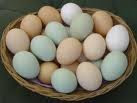 Hello everyone, I hope you all had a great holiday season and are well into 2011. I for one am looking forward to the New Year and expect some good cooking and eating ahead. One of my goals to start the new year (on a personal basis) is to get into more healthy cooking and eating. I have a few prospective clients asking about this so what better way to get the message across then by doing it myself. Healthy cooking can be tasty cooking! We all know its hard to maintain a healthy lifestyle during these cold, dark winter months but one way is to eat better since outdoor activities are somewhat limited. I am not saying we should all stay inside (my dog Sammy and I still take 2 mile hikes 3-4 times a week).
Hello everyone, I hope you all had a great holiday season and are well into 2011. I for one am looking forward to the New Year and expect some good cooking and eating ahead. One of my goals to start the new year (on a personal basis) is to get into more healthy cooking and eating. I have a few prospective clients asking about this so what better way to get the message across then by doing it myself. Healthy cooking can be tasty cooking! We all know its hard to maintain a healthy lifestyle during these cold, dark winter months but one way is to eat better since outdoor activities are somewhat limited. I am not saying we should all stay inside (my dog Sammy and I still take 2 mile hikes 3-4 times a week). But it is helpful to reduce calorie intake to offset not only the holiday gain but also the reduced calorie burn. Since we have another No'easter heading this way for the third snow storm in three weeks, I have made a lot of soup lately. Of course soup can be a meal in itself and with a couple slices of crusty bread, you can be quite satisfied. Perhaps I will talk about hearty meal soups in another blog but today I want to talk about a delicious vegetable (vegetarian) soup that is better for you then a cup of hot tea or coffee and will certainly warm you up on a cold winter day.
But it is helpful to reduce calorie intake to offset not only the holiday gain but also the reduced calorie burn. Since we have another No'easter heading this way for the third snow storm in three weeks, I have made a lot of soup lately. Of course soup can be a meal in itself and with a couple slices of crusty bread, you can be quite satisfied. Perhaps I will talk about hearty meal soups in another blog but today I want to talk about a delicious vegetable (vegetarian) soup that is better for you then a cup of hot tea or coffee and will certainly warm you up on a cold winter day.As with all soups, you can tailor it to your own liking, for example I tend to use a lot more cayenne pepper then the recipe calls for. You may also add any vegetables you have in the fridge that may be a little "less" then fresh.
The prep time on this is 10-15 minutes and if you use a food processor then it can be prepped in 5 minutes! I personally prefer to the old knife and cutting board on this one since there is not a lot of chopping and it is easier to clean up. I also do not add salt to my soup and find it flavorful enough as is. The best part of this soup beside the taste is that it is less then 60 calories per serving and is low sodium and low fat. You can either make it on the stove top or in a slow cooker. I prefer the slow cooker since you can make it in the evening and its done before you go to bed. Since it is so cold lately I put my batch on the back porch overnight but remember the FOOD DANGER ZONE and be sure that you do not leave it on the counter overnight. Hope you enjoy! As always, appreciate any comments you'd like to add and please visit ParkHillChefs.com and sign up for our newsletter.
Chef Rob's Winter Warmer Vegetable Soup
12 baby carrots rough chopped
1 large onion Diced
3 med stalks celery rough chopped
10 oz pre-washed baby spinach
3 cloves garlic (put through press or minced)
32 oz container low sodium vegetable broth
28 oz can crushed tomatoes
1 T Basil
1 t Oregano
1 t Sage
1 t Thyme
2 Bay leaves
1/4 t Cayenne Pepper
Place all ingredients in slow cooker on high and cook for three hours.
If you prefer stove top then place all ingredients in soup pot and bring to boil , reduce to simmer and cook for an additional 30 minutes, stirring occasionally.
makes 8 servings
















